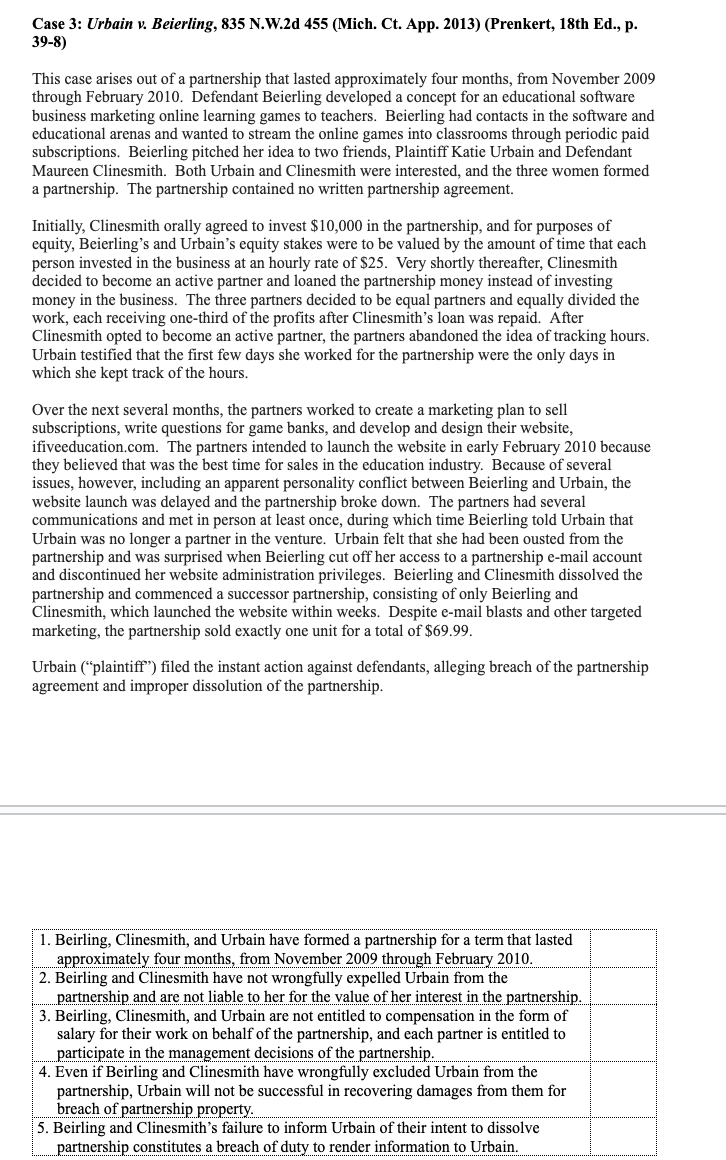TRUE OR FALSE AND WHY

Case 3: Urbain v. Beierling, 835 N.W.2d 455 (Mich. Ct. App. 2013) (Prenkert, 18th Ed., p. 39-8) This case arises out of a partnership that lasted approximately four months, from November 2009 through February 2010. Defendant Beierling developed a concept for an educational software business marketing online learning games to teachers. Beierling had contacts in the software and educational arenas and wanted to stream the online games into classrooms through periodic paid subscriptions. Beierling pitched her idea to two friends, Plaintiff Katie Urbain and Defendant Maureen Clinesmith. Both Urbain and Clinesmith were interested, and the three women formed a partnership. The partnership contained no written partnership agreement. Initially, Clinesmith orally agreed to invest $10,000 in the partnership, and for purposes of equity, Beierling's and Urbain's equity stakes were to be valued by the amount of time that each person invested in the business at an hourly rate of $25. Very shortly thereafter, Clinesmith decided to become an active partner and loaned the partnership money instead of investing money in the business. The three partners decided to be equal partners and equally divided the work, each receiving one-third of the profits after Clinesmith's loan was repaid. After Clinesmith opted to become an active partner, the partners abandoned the idea of tracking hours. Urbain testified that the first few days she worked for the partnership were the only days in which she kept track of the hours. Over the next several months, the partners worked to create a marketing plan to sell subscriptions, write questions for game banks, and develop and design their website, ifiveeducation.com. The partners intended to launch the website in early February 2010 because they believed that was the best time for sales in the education industry. Because of several issues, however, including an apparent personality conflict between Beierling and Urbain, the website launch was delayed and the partnership broke down. The partners had several communications and met in person at least once, during which time Beierling told Urbain that Urbain was no longer a partner in the venture. Urbain felt that she had been ousted from the partnership and was surprised when Beierling cut off her access to a partnership e-mail account and discontinued her website administration privileges. Beierling and Clinesmith dissolved the partnership and commenced a successor partnership, consisting of only Beierling and Clinesmith, which launched the website within weeks. Despite e-mail blasts and other targeted marketing, the partnership sold exactly one unit for a total of $69.99. Urbain ("plaintiff") filed the instant action against defendants, alleging breach of the partnership agreement and improper dissolution of the partnership







